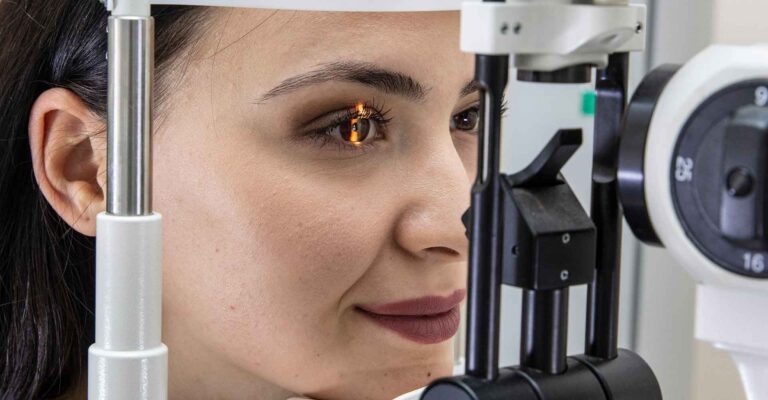Eye health and vision correction have dramatically improved over the years, thanks to modern advancements in medical technology. Two of the most popular procedures for vision correction today are LASIK and SMILE Laser Eye Surgery. Both techniques have proven to be highly effective in correcting vision, but they have distinct differences that potential patients should understand before making a decision. This article delves into the differences between the two procedures, shedding light on the benefits, drawbacks, and suitability of each.
Understanding LASIK Eye Surgery
LASIK, short for Laser-Assisted In Situ Keratomileusis, has been in use since the 1990s and remains one of the most popular forms of laser eye surgery. The procedure involves creating a thin flap in the cornea, lifting it, and then reshaping the underlying corneal tissue using a laser to correct vision. The flap is then repositioned, and due to the cornea’s natural bonding properties, stitches are rarely needed. LASIK is often used to treat myopia (nearsightedness), hyperopia (farsightedness), and astigmatism.
The LASIK Procedure: What to Expect
The LASIK procedure is relatively quick, often taking about 10-15 minutes per eye. Patients are usually awake during the procedure, with anesthetic eye drops used to numb the eye. A protective shield is typically placed over the eye after surgery to protect it from accidental rubbing or pressure. Post-surgery, patients may experience dry eyes or temporary visual disturbances, but these usually resolve within a few weeks. The recovery period for LASIK is usually short, with most patients resuming normal activities within a day or two.
Understanding SMILE Laser Eye Surgery
SMILE, an acronym for Small Incision Lenticule Extraction, is a newer form of laser eye surgery that has been gaining popularity. SMILE is particularly suitable for patients with thinner corneas, dry eyes, contact lens intolerance, or those who are not good candidates for LASIK. Unlike LASIK, which requires a corneal flap, SMILE laser eye surgery involves creating a small incision in the cornea through which a small piece of corneal tissue is removed. This changes the shape of the cornea and corrects the refractive error.
The SMILE Procedure: What to Expect
The SMILE procedure is also quick, typically taking about 10-15 minutes per eye. One of the key differences between SMILE and LASIK is that SMILE is a ‘flapless’ procedure. This means that there is less disruption to the corneal surface, which can reduce the risk of certain complications, like corneal ectasia. After surgery, a protective shield is placed over the eye to protect it, similar to LASIK. The recovery period for SMILE is also relatively short, with most patients returning to their normal activities within a few days.
Comparing LASIK and SMILE: Advantages, Limitations, and Suitability
LASIK and SMILE both have their own unique advantages. LASIK has a longer track record and is capable of treating a wider range of refractive errors. It also allows for the possibility of retreatment if necessary. SMILE, on the other hand, is less invasive as it does not create a corneal flap. This can lead to fewer dry eye symptoms post-surgery and a lower risk of corneal flap complications.
However, each procedure also has its limitations. For LASIK, potential complications can arise from the corneal flap, such as flap dislocation or epithelial ingrowth. For SMILE, the procedure is slightly more technically challenging and requires a higher level of surgical skill. Additionally, SMILE is not typically used to correct hyperopia or high levels of astigmatism.
In terms of suitability, an eye surgeon will be able to advise the best procedure based on an individual’s eye health, lifestyle, and specific vision correction needs.
Conclusion
Both LASIK and SMILE Laser Eye Surgery offer effective solutions for vision correction. While they share similarities, their differences lie in the surgical technique, the range of refractive errors they can treat, and their associated advantages and limitations. It’s important for potential patients to seek professional advice and make an informed decision based on their individual needs and circumstances.
FAQs
Is one procedure more effective than the other?
Both LASIK and SMILE are highly effective for correcting vision. The effectiveness can vary based on individual circumstances and the specific refractive error being treated.
Are the procedures painful?
Both procedures involve the use of anesthetic eye drops to numb the eye, so patients typically feel minimal discomfort. Post-surgery, patients may experience some mild discomfort or dryness, which usually resolves within a few days.
How long does the recovery period last?
For both LASIK and SMILE, most patients can return to their normal activities within a few days. However, the full healing process can take several weeks, and it may take up to three months for vision to fully stabilize.
Are there any risks associated with these procedures?
As with any surgical procedure, there are potential risks. For LASIK, these can include dry eye syndrome, temporary visual disturbances, and corneal flap complications. For SMILE, potential risks include difficulty removing the lenticule and visual disturbances. However, serious complications are rare, especially when the procedure is performed by an experienced surgeon.
Can these procedures treat presbyopia (age-related farsightedness)?
Both LASIK and SMILE are primarily used to treat myopia and astigmatism. While LASIK can be modified to correct presbyopia (monovision LASIK), this is not typically the case for SMILE. It’s essential to discuss this with an eye surgeon to understand the best options for presbyopia treatment.



